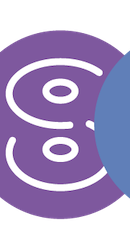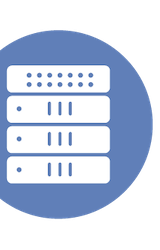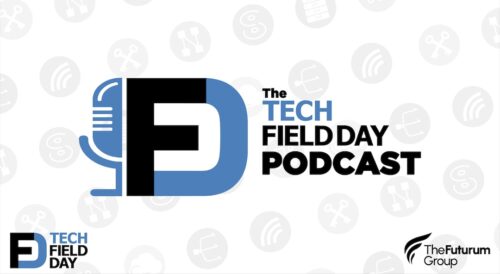In this post, Security Field Day delegate Zoë Rose takes a look at a number of incidence response and security tools aimed at SMEs. These often have the same issues as larger organizations, but must face them with smaller staffs and budgets. Tools targeting these customers need to be particularly efficient to maximize both. Zoë takes a look at several solutions, TotalView by PathSolutions (who presented at Security Field Day, PRTG by Paessler (which has been featured at several Field Day events), and Solarwinds MSP RMM (no stranger to our events either). She lists the pros and cons of each solution, and its a great roundup to start your research.
SolarWinds Joins the Cloud APM Game
Justin Warren sees the market for cloud monitoring tools as both crowded and operating on unstable ground. He got to see how SolarWinds plans to differentiate itself in this field at Cloud Field Day, with their Application Performance Monitoring suite. This consists of AppOptics, Loggly, and Pingdom, three products that SolarWinds brought in through acquisitions over the years. Justin sees this as a a cloud-based version of SolarWinds’ existing Orion platform. Justin would like to see the APM suite have deeper integration with Orion, but he wonders if these are being kept as separate to not bog down APM with legacy solutions that may not be relevant to organizations in the future. Be sure to check out his article and dig into the full presentation video for all the details.
What Is APM and Why Should I Care?
In this piece, Chris Grundemann gives an overview of why application performance management matters in modern IT. As a hard-core infrastructure engineer, he appreciates the importance of getting visibility across infrastructure. But the reason that is so important is to get better indicators into application performance, which is the reason that the infrastructure exists in the first place. At Cloud Field Day, SolarWinds showed how their APM suite can help provide visibility to the application layer, even as backing infrastructure becomes more challenging with moves to the cloud.
The Three Philosophies of SolarWinds APM
Application Performance Management often faces the thankless task of trying to monitor and manage increasingly complex applications. SolarWinds’ APM suite smartly views apps through three distinct philosophical lenses to provide IT will a full spectrum of visibility. In this post, Rich Stroffolino takes a look at the APM solutions SolarWinds presented at Cloud Field Day, including Loggly, Pingdom, and AppOptics. Each of these provides a key component to the overall suite, and while they do interoperate and feed into each other, they do so with a unique approach to the APM problem.
Aid Complex Troubleshooting With Distributed Tracing – Day Two Cloud Podcast Video
Distributed tracing is the dark art of tracking a transaction that passes through several microservices for troubleshooting purposes. Why was the transaction slow? Hard to say, especially when the failure is intermittent. Ned Bellavance and Ethan Banks explain the problem and how SolarWinds Application Performance Monitoring suite is tackling it with Pingdom, Loggly, and AppOptics. Especially AppOptics, something they heard a lot about during SolarWinds’ Cloud Field Day presentation.
Day Two Cloud 047: Highlights and Analysis From Cloud Field Day 7
In this episode of the Day Two Cloud podcast, Ethan Banks and Ned Bellavance discuss some of the presentations from Cloud Field Day. They looked at the big presentations from VMware, SolarWinds, and startup Pensando in the episode, specifically focusing on VMware Cloud on AWS, monitoring cloud performance with SolarWinds, and Pensando’s SmartNIC to offload a server’s network processing. Having two great hosts discussing the latest cloud goodness makes for a good podcast.
Monitoring Application Performance From the Inside Out With Solarwinds AppOptics
Are you relying on old tools to monitor your modern applications? Tom Hollingsworth takes a look at why you should examine the way you keep an eye on your applications and how your users experience them. At Cloud Field Day, he saw that this is where SolarWinds comes into play. They have spent a great deal of time creating the best tool to handle monitoring of your application from the inside out. Their AppOptics solution does more than just monitor the response time of your pages. It digs deep into the services that compose the application to find out what’s actually going on when users run complicated queries or connect to a node that is having some performance issues.
SolarWinds X Cloud Field Day 7
At Cloud Field Day, SolarWinds provided a comprehensive company product overview, APM technical history, and demo of the APM Suite. This post culls together all their great presentation videos, providing deep dives into AppOptics to improve application performance in Kubernetes, the latest with metrics and analytics, and more. Be sure to subscribe to the Tech Field Day YouTube channel to get all of our event videos in your feed.
Cloud Field Day 7 (#CFD7): A Heads-Up
We were lucky to have Ather Beg joins us as a delegate for Cloud Field Day. He always brings keen insight and extensive industry experience to offer a truly unique voice around the delegate table, virtual or otherwise. In this post, he gives a look at each of the presenters and why their session may be of interest to a wider audience. There was VMware, no stranger to Field Day, doing two sessions on their VMware Cloud on AWS solution. He was also interested in Stellus’ key-value store approach to storage to provide exceptional performance using protocols like NFS. There was also a presentation from SolarWinds, as well as a look into the Pensando Distributed Services Platform. Be sure to check out all the presentation videos to get to speed with the latest from the event.
SolarWinds Presents at Cloud Field Day 7
Designed for hybrid and cloud-native IT environments, the SolarWinds application performance management (APM) products come together to help identify performance anomalies, understand dependencies, trace requests, and pinpoint the root cause of issues. With a shared agent and common trace ID, you can isolate logs to a specific transaction, identify impacted systems, and view events in […]
Cloud Field Day 7 – Who Will Be Presenting?
Alastair Cooke will be joining us virtually for Cloud Field Day later in April. Instead of the jetlag that comes from crossing an ocean to usually be at an event, he’ll instead be up early to join the other delegates for the presentations. Though a virtual event, he’s looking forward to the same in-depth technical presentations, the opportunity to ask direct questions to the presenters, and the great conversations with the other delegates. In this post, he runs down what he’s looking forward to from each of the presenters. This includes a mix of Field Day stalwarts like Aruba, VMware, and Solarwinds, with newer companies to the event series, like Stellus and Pensando. Be sure to mark your calendar to join the live stream to watch the event along with Alastair.
What I Want in a Root Cause Analysis Tool
In this post from Ethan Banks, he outlines what he’s looking for in a root cause analysis tool. It’s something that despite hearing a lot about at events like Tech Field Day, he feels there isn’t a unified solution. Current tools are too specialized to serve broader infrastructure, which is after all designed to serve applications. Hopefully a solution will come to market soon to meet Ethan’s criteria.
The Importance of User Interfaces in IT Infrastructure Management
Enrico Signoretti looks at the importance of user interface in this piece, something that in an age dominated by automation and APIs is often forgotten. He looks at the different approaches to UI on display at a recent Tech Field Day event.
Data Visualization: A Picture Is Worth a 1000 Words
Jon Klaus writes about the data visualization capabilities SolarWinds showed off at Tech Field Day. Their Orion suite contains a number of tools with advanced visualizations, including Network Atlas, AppStack, NetPath, and PerfStack.
SolarWinds Aims to Connect the Data Dots
Everyone has a story to tell, and if you’re willing to listen, you just might learn something! The same is true when it comes to business associates; even companies ought to have a defining story. In addition to listening and watching, it’s also important to know the right questions to ask. Questions, context, and analysis turn information to data and transform data into a story. Stephen Foskett looks at how SolarWinds is working to connect these data dots into a story, based on what he saw at Tech Field Day.
SolarWinds Takes on Security
Security might not be top of mind when thinking of SolarWinds, but after seeing their presentation at Tech Field Day, Nathaniel Avery is starting to consider them in a new light. They demoed their SolarWinds Access Rights Manage for Microsoft Active Directory, trying to solve the classic problems of account and permission management. Combined with their large existing customer base, and their consistent UI across products, Nathaniel thinks they can make an aggressive move into the security market going forward.
Tech Field Day 18 – Day 2 With SolarWinds
Ed Horely has been writing up his impressions from his recent appearance at Tech Field Day. In this post, he’s focusing on what he saw from SolarWinds. This session focused on machine learning, anomaly detection, and Database Performance Analyzer. Ed particularly enjoyed hearing the company getting into the issues around giving digestible information to users when utilizing algorithmic predictive analysis.
SolarWinds – Moving Monitoring in the Right Direction
Nathaniel Avery got to hear from Solarwinds last week at Tech Field Day from the company’s home base of Austin. He got to see how the company’s IT portfolio has expanded, now encompassing over 50 products, including network management, systems management, database management, IT security, helpdesk, and DevOps. What he really enjoyed hearing was how Solarwinds put work into their product design to make moving within this massive product portfolio less daunting, like trying to match interfaces when possible. It’s that behind the scenes kind of conversation you can only get at a Tech Field Day event.
TFD18 Prep: Solarwinds
Justin Warren must have been a good student, because he’s always sure to do his homework for Tech Field Day. Before heading down to Austin last week, Justin wrote up a preview of what he expected to see from Solarwinds. The last time he heard a presentation from them was in early 2016, so a lot has changed since then. The company has grown dramatically, positioning themselves to be an all-in-one IT management company. We’re looking forward to seeing if their presentation convinced Justin in his posts going forward.
Improving Network Management Tools
In this post, Pete Welcher considers how to improve network management tools. The problem with these is that they are often sold to customers without any consideration for their use-cases and needs. He considers some of the path tracing tools he saw from SolarWinds at Networking Field Day as a great way to frame that information, and suggests that other network management tools would do well to adopt that methodology for other metrics.









